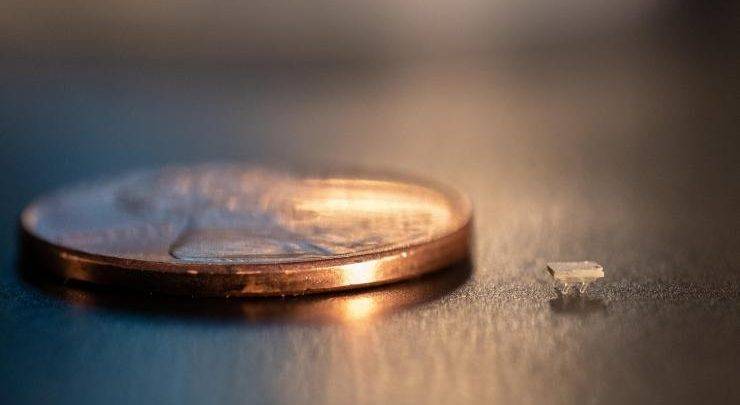Researchers from Georgia Tech have developed tiny 3D printed robots measuring about 2 mm in length that use micro bristle technology and vibrations to move around. The teeny bots, produced using two-photon polymerization lithography (TPP), could have diverse applications, including detecting environmental changes, and repairing injuries inside the human body.
The small robots, referred to as “micro-bristle-bots,” are reportedly about the size of the world’s smallest ant and have been designed to harness vibrations from piezoelectric actuators, ultrasound sources or small speakers to move around. At this stage in the robot development, the Georgia Tech team has already succeeded in programming the 3D printed robots to respond differently to varying frequencies. In other words, the researchers can control the bots by adjusting the vibration.
Despite their size, the robots can cover significant ground—moving up to four times their own length (about eight millimeters) in a second. This movement is enabled by a piezoelectric actuator that is glued to a minuscule 3D printed polymer body, which generates vibration. The actuator must be powered externally because there are currently no batteries small enough to fit onto the robot. The robots can also move using a piezoelectric shaker, ultrasound source or acoustic speaker placed underneath the robots’ surface.
No matter the vibration source, the oscillations cause the robot’s springy legs to move up and down, propelling the micro-bristle-bot forward. Interestingly, the robots can be programmed to move in certain ways by tweaking their leg size, diameter, design and geometries, while their speed can be adjusted by changing the amplitude of the vibrations.
“As the micro-bristle-bots move up and down, the vertical motion is translated into a directional movement by optimizing the design of the legs, which look like bristles,” explained Azadeh Ansari, an assistant professor in the School of Electrical and Computer Engineering at the Georgia Institute of Technology. “The legs of the micro-robot are designed with specific angles that allow them to bend and move in one direction in resonant response to the vibration.”
As mentioned, the body and bristles of the robots are made using a process known as two-photon polymerization lithography (TPP), which consists of polymerizing a monomer resin material using ultraviolet light. The process is capable of producing very small components and was thus suitable for the robots.
Presently, the research team is investigating how it can scale the 3D printing process in order to print hundreds of thousands of micro-bots at a time. “We are working to make the technology robust, and we have a lot of potential applications in mind,” said Ansari. “We are working at the intersection of mechanics, electronics, biology and physics. It’s a very rich area and there’s a lot of room for multidisciplinary concepts.”
In terms of applications, the researchers believe the individually programmable micro-bots could be used to detect environmental changes and possibly even repair injuries inside the human body. Moreover, because the piezoelectric actuators are made from lead zirconate titanate (PZT), they not only vibrate when electric voltage is applied to them but they can also generate a voltage—a capability that could be used to power up onboard sensors when they are actuated by external vibrations.
In addition to exploring the scalability of the AM process, the research team is also developing steering capabilites for the micro-bots by joining two slightly different micro-bristle bots together. “Once you have a fully steerable micro-robot, you can imagine doing a lot of interesting things,” Ansari said.
Source: 3dprintingmedia.network


